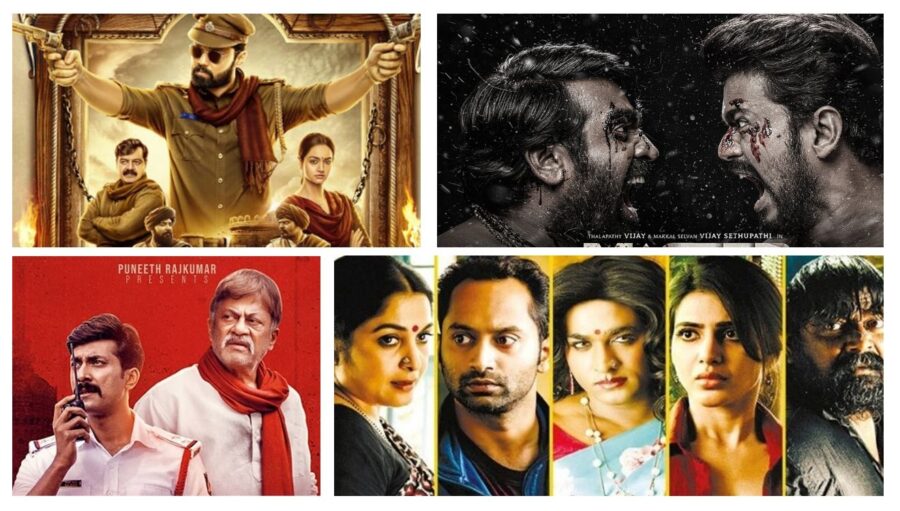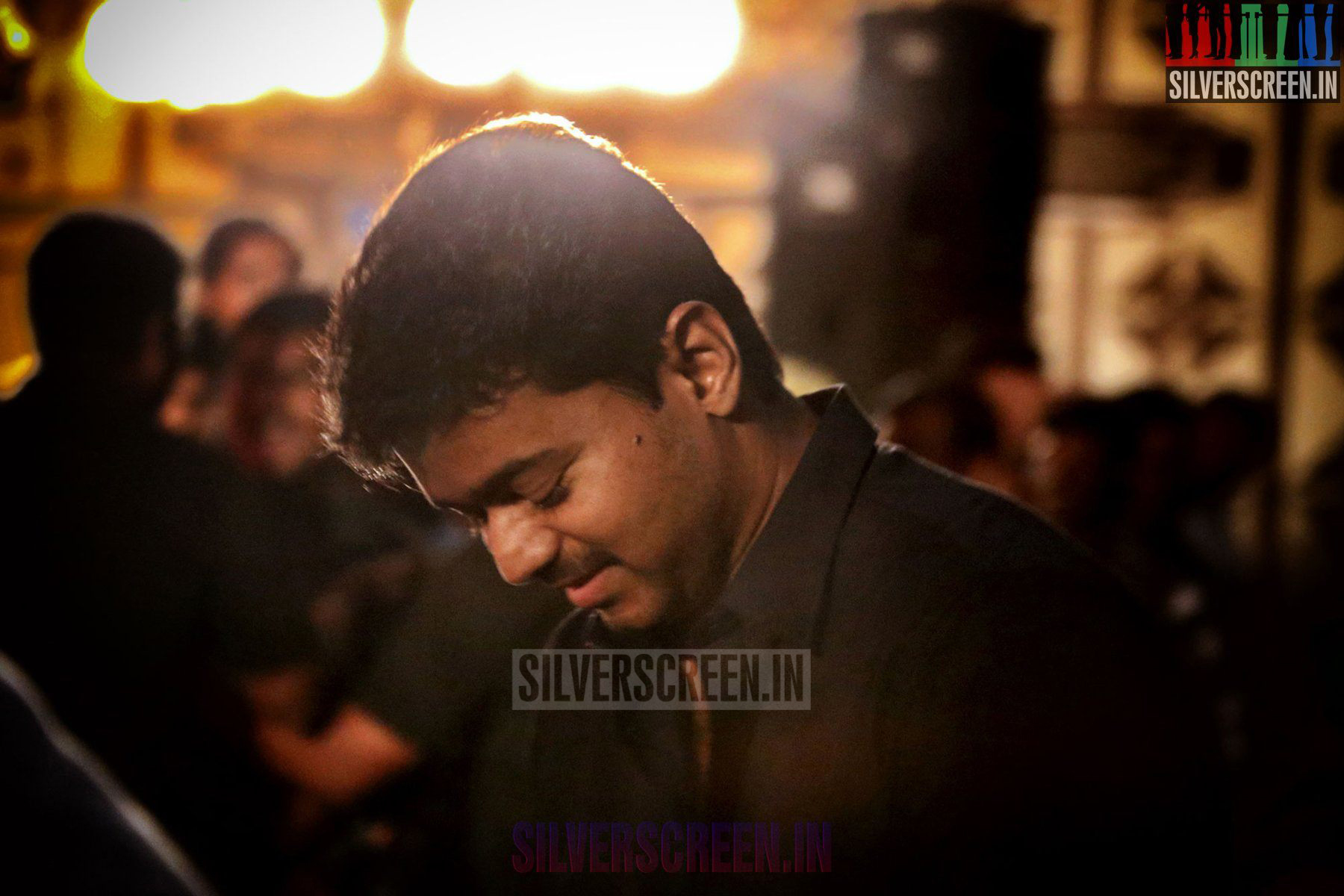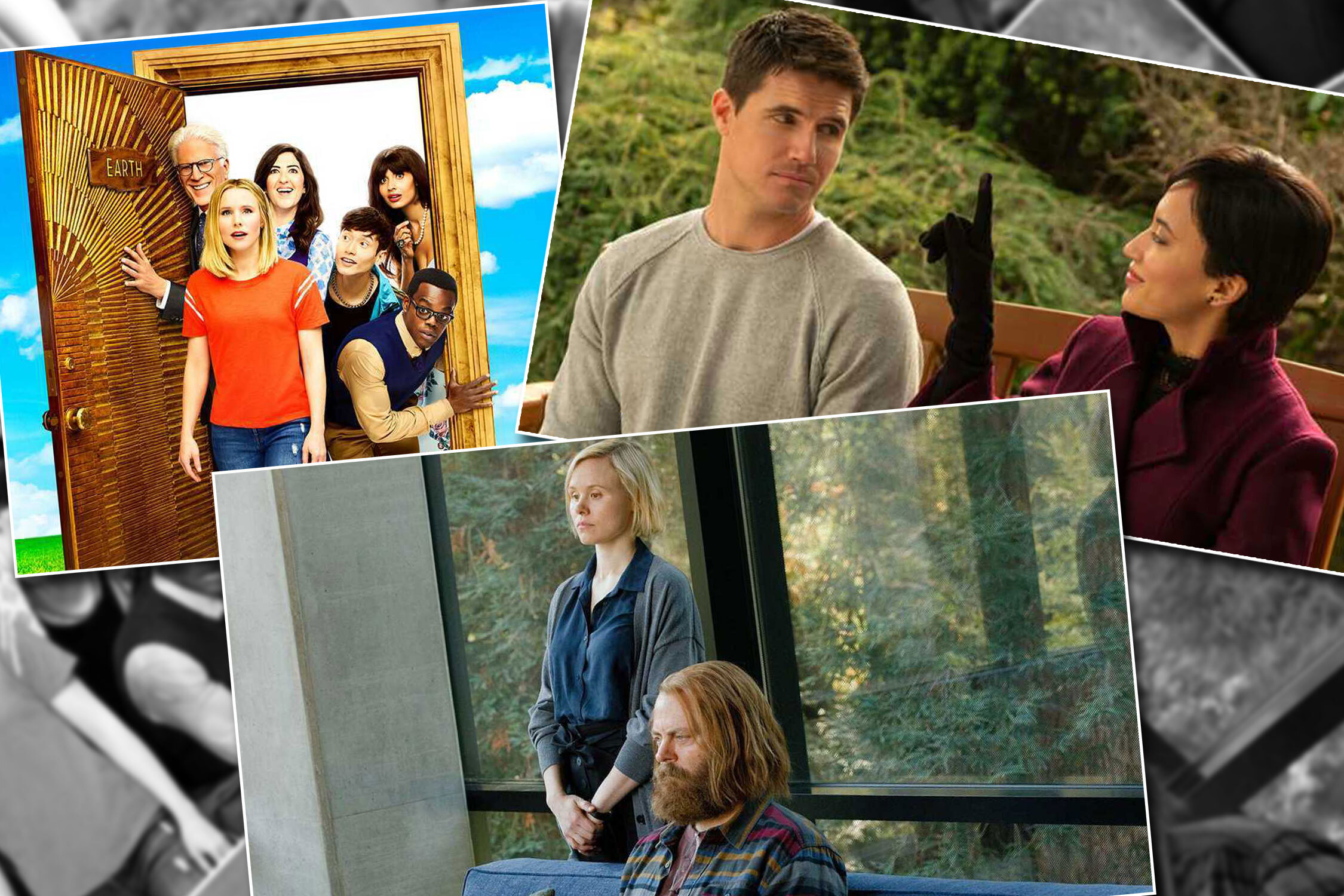In the past fortnight, two announcements have been met with a fair bit of surprise in the Tamil film industry. Simply because both are pushing the envelope a bit more when it comes to the tried-and-tested ‘kadhai-thiraikadhai-vasanam-iyakkam’ (story-screenplay-dialogue-direction) format.
Dance master Brinda makes her debut as a director with Hey Sinamika, starring Dulquer Salmaan, Aditi Rao Hydari, and Kajal Aggarwal. She’s working with lyricist Madhan Karky for the story, screenplay, and dialogues. And, Karthick Naren has teamed up with Sharfu and Suhas of Virus fame for his film with Dhanush.

In the early decades of Tamil cinema, there were writing teams. Later, Sujatha famously worked with Shankar and Mani Ratnam, including in Endhiran, Kannathil Muthamittal, Roja and Anniyan, while Balakumaran was popular for his work in Nayakan, Guna, Baasha, and Pudhupettai, among others. KV Anand has always been known to work with writers Suba.
More recently, Gautham Vasudev Menon directed the web series Queen, written by Reshma Ghatala, his associate. Years ago, he co-wrote Jiiva and Samantha-starrer Neethaane En Ponvasantham with Reshma. Lokesh Kanagaraj, who is riding high on the success of Kaithi, has collaborated with Aadai-fame Rathna Kumar (he’s doing the additional screenplay) for Vijay-starrer Master. Last year’s hit, Ashwin Saravana’s Game Over would not have been what it was without co-writer Kaavya Ramkumar’s contribution. As for Hindi, published author and writer Kanika Dhillon is a brand by herself and works with the best of directors. So far, these have been seen as exceptions rather than the norm. That might be slowly changing.
Karthick Naren, whose last film Mafia, starring Arun Vijay, Prasanna, and Priya Bhavani Shankar, was praised for its style and criticised for its writing, on teaming up with writers for his next: “I like this idea of a collaboration. I am working with a huge star, and I wanted someone with that sensibility to work with me. Somehow, I feel writing is about imagination, and that aspect of a film must be without boundaries. When a director writes, that freedom is fettered. This is a common system in Hollywood; the writer and the director are different.”
In fact, the director says he is listening to others’ scripts that he can possibly direct later. “When you work with someone you sync well with, the process of creation becomes interesting. I like both writing and direction, but I always feel I had a lot more time to write Dhuruvangal 16, since I wrote it before shooting, and that was my only job. Now, I believe a professional writer is important to help fill in gaps, and to let the director visualise.”
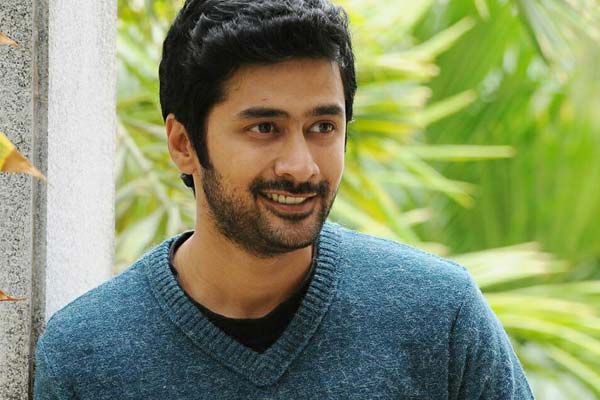
Rahul-Ravindran
Rahul Ravindran who won the National Award For Best Original Screenplay for his debut directorial Chi La Sow, and adapted a French film for his second, Manmadhudu 2, says that while he loves writing, he’s always open to working with someone else’s content, especially, if it’s something he’s not capable of writing himself. “Writing and direction are two completely different skill-sets, and they need not go together. Many think a director is worth his salt only if he writes. I differ. Directing is a technical job that requires high skill. It’s perfectly fine for a director to be excited by someone else’s material and choose to just direct a film.”
Rahul points out that since directors get paid way more than writers, most writers attempt to switch to directing at some point. “What will work is a system where a talented pool of well-paid writers constantly churn out quality stuff that someone else can direct. We must get one thing clear. There are different kinds of projects — some driven by actors, some by writers, and some by directors. There should be space for all,” says Rahul. Interestingly, before he began work on his next film, Rahul tweeted out the broad outline of a scene and asked those interested in writing to come up with something. Adhitya, a young graduate who replied, now interns with Rahul.
Rahul says there are many ways of approaching a film — waiting for years to crack a great idea and flesh it into a two-hour script; working with a script you’re not entirely happy with just because you need to keep making films; using someone else’s readymade content and directing it. “If someone writes better than you, use them,” he says.
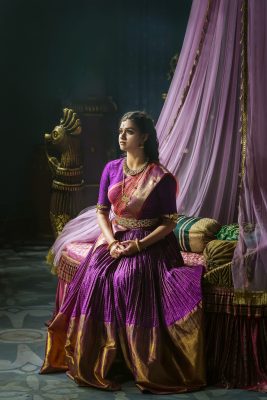
Madhan Karky has worked on dialogues for films including Shankar’s Enthiran and Nanban and Mahanati’s Tamil version Nadigaiyar Thilagam. He collaborated with SS Rajamouli to create the Kiliki language for one of the warring tribes in Baahubali, and is also working on the dialogues for the Tamil version of RRR, starring Ram Charan and Junior NTR. He moves on to write an entire film with Hey Sinamika. “Earlier, this was the system. Every production house would have a kadhaikuzhu (a story group), which kept writing. However, with time and the lack of recognition for writers, many turned to direction. What I find is that directors who think big, like Rajamouli and Shankar, prefer being left alone to visualise. Sometimes, writing disturbs the director’s thought process,” he says.
Rajamouli, for instance, works with his father, writer KV Vijayendra Prasad, who has written blockbusters such as the Baahubali franchise, Bajrangi Bhaijaan, Mersal, Eega, and Magadheera. Karky says the Malayalam industry has popularised this model again in recent years, and if Tamil accepts it too, it will be “a healthy change and recognition for writers”. Speaking about Hey Sinamika, he says he has been “enjoying the process. I have been given the freedom to do the story, screenplay, and dialogues, and it’s been a rewarding experience. In fact, inspired by this, I’ve started working on ten more stories that I hope to pitch to producers. Shifting from one aspect of writing to another gives me the freedom to do a lot of things, and I like it all the more because I’ve always been fond of telling stories.”
In Kannada, Rakshit Shetty is one of those stars who has involved himself in almost every aspect of the film industry. He writes, acts, directs, produces and distributes movies. In fact, Avane Srimannarayana in which he starred was written by Rakshit Shetty and The Seven Odds – Chandrajith, Abhijit Mahesh, Sachin Ravi, Anirudh Kodgi, Nagarjun, and Abhilash.
“If a director is a writer, nothing like it. But, even if he is not, it’s nice if he can get involved in the process at some level. In fact, when we wrote Avane…, director Sachin Ravi was with us throughout, and thoroughly involved. He had a complete grip on what the film was about. When we write in a group, there has to be one person who guides the team, who knows exactly what is being written. That said, there are people who can take a bound script, read it, and direct. I prefer a more collaborative process because I feel the perception of the writer and director has to sync. Even with Charlie (written and directed by Kiranraj K, and starring Rakshit), I did give my inputs. That said, I definitely think good writing is the basis of any cinema. Without good writing, you cannot make a good film,” adds Rakshit who takes a call on collaborating or not with a writer, depending on the project. “Some films, say Punyakoti that I will be doing, I’d like to write on my own. I think it depends on the philosophy behind a film and the journey it will take.”
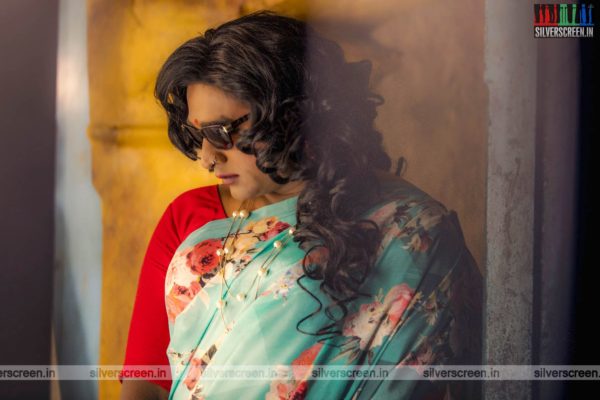
Exactly a year ago, a film that demanded this kind of writing released. Super Deluxe brought together Thiagarajan Kumararaja, Mysskin, Neelan, and Nalan Kumarasamy. The various worlds that collided in this universe needed different voices to write them. Even today, one can only guess who wrote some of the episodes; Kumararaja chose to keep that under wraps. Similarly when Shankar’s Indian 2 releases, the world will see what writers Jeyamohan, Kabilan Vairamuthu, and Lakshmi Saravanakumar have lent to the script and dialogues.
Why do people collaborate on something so deeply personal as a story/script? Gautham Menon, who has always been open to collaborations, says: “Working with someone helps provide a different dimension to your work. If I find something in my zone, it works out well. I’m now working with some American writers. The process is nice. I set it up, and they write page after page for me. I hope to direct this at some point. Queen 2 is also happening, and I’m reading some other material writers have sent in. What I look forward to working with is something that could have come from me or something that did not come from my mind space but which stuns me. I like a bit of this and that.”
Does he prefer being a writer or director? “Writing is not very easy. I enjoy it, but it is rough and not an easy process. You need to be constantly inspired to create. Direction comes more easily to me. I can move to Plan B or C depending on what is happening.”
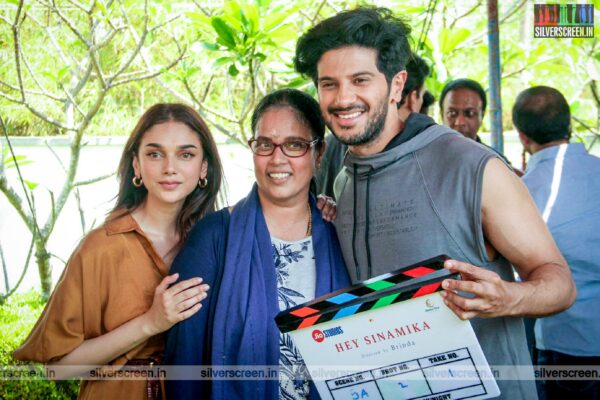
Another person who has transitioned to direction is a choreographer known for the ‘story’ in her dance sequences. Brinda Master is working with hugely popular actors and an equally popular lyricist-writer, and says this model of splitting the direction and writing team will work.
“Mumbai and Kerala are already doing this. In the case of Hey Sinamika, I somehow felt that it would be better if I worked with someone who knows Tamizh well, and it has worked out beautifully. Directing is like dance choreography too, and so it’s not much of a difference, it’s almost a natural extension,” she says. (In a Twitter banter with actor-director Prithviraj, Dulquer said Brinda tends to say ‘music’ instead of ‘action’ but is otherwise having a whale of time directing). Brinda says a good story can come from any space. “Even a child can write something that deeply appeals to the director in me.”
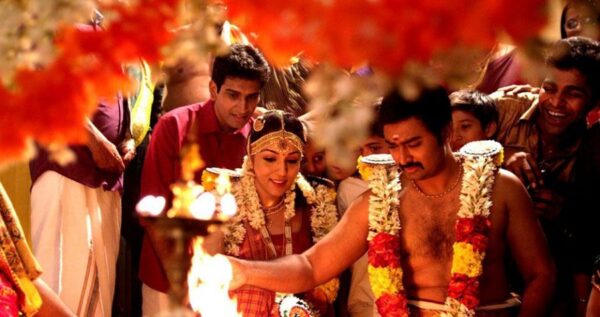
Kalyana Samayal Saadham, was director RS Prasanna’s own script. After that he made a biopic on Swami Chinmayananda, titled On a Quest, working with a script from the Chinmaya Mission. When he went to Bollywood to make Shubh Mangal Saavdhan, he worked with writer Hitesh Kewaliya, who transplanted the film from South India to the heart of the North. “I always saw myself as a pure director, even from school, when I would work with content from Crazy Mohan and S Ve Shekhar and create something for the school play. I think I always delineated between director and writer, instinctively. Writing for me is deeply personal, like KSS was. I want to do that kind of writing once in three or four years; it takes that much from me. As a writer myself, I love working with other writers purely as a director. I love writing, but find it easier to direct. It comes naturally and appeals to me more than writing does.”
Hemanth Rao has done both: write and direct films (the much-feted Kannada films Godhi Banna Saadharana Mykattu and Kavaludaari) and write for someone else – he was part of the National Award-winning team of writers who won the Best Screenplay (adapted) for Sriram Raghavan’s Hindi superhit Andhadhun.

He’s now working on his next with Rakshit, Sapta Sagaradaache Yello (Beyond the seven seas). He has a nuanced take on working with a writer. “When you write and direct, there are some gaps you leave, relying on the director in you to fill them up. It becomes a much easier process too because the two roles are performed by the same person. That said, for another director to hit the same notes the writer intended becomes a challenge. Sticking to just writing is also an interesting exercise because you just focus on the storytelling, the detailing and nothing else. You’ve written the best version of the story you want to say. You are free, and that’s a nice feeling. You don’t allow thoughts such as budget and performance to rein you in. A director just has to translate that on screen. I am someone who entered the field as a writer, and learnt direction as a skill through observation and reading. Writing comes naturally to me. But, I also look out for stories from others that will test me as a director, and help me hone my craft. Now, while writing Sapta… I have teamed up with my long-term associate Gundu Shetty, who co-directed Kavaludaari and was part of the writing team too. I like his perspective.”
Does Hemanth ever feel he’s ceding control when he works with another writer? “No. The core idea is mine, the frame is mine. It’s nice to let someone else colour it, ensuring it never smudges the borders.”
Recommended
After his script for Adho Andha Paravai Pola was approved by the producer, Arun Rajagopalan was asked if he wanted to direct. The young writer chose not to because that was not his forte. “Our industry tries to follow trends, and that’s where writers lose out. Everyone makes a similar film if the first one does well. That said, no one seems to worry about the fact that for the audience, what really matters is a good film that entertains or engages them in some way. In Tamil, I will say that if four or five writer-driven films do well, that might well become a trend. Else, it shall remain a struggle. In case some people opt for this for the sheer novelty factor, it won’t work.”
While the Kerala model of superstar writers such as Syam Pushkaran, Murali Gopy, Dileesh Nair and Unni R who get top billing may take some time to arrive in other industries, at least some have begun to give importance to the role of a writer. And when this happens, cinema stands to benefit. As does the audience.
